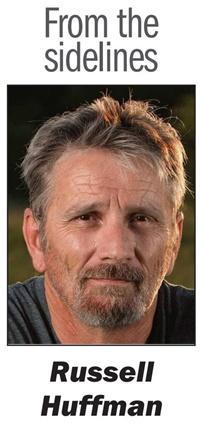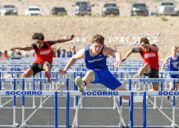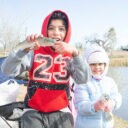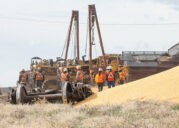
I was questioned as to why I felt this was so important.
To me, nothing defines the American West like a cowboy hat. You see someone wearing a cowboy hat, and several things may run through your mind, but the American West will creep in somewhere.
Rodeo is the one sport directly derived from the old west where cowboys went from seeing who could trip a steer the quickest to eventually some cowpoke betting another one he could ride 2,000 pounds of hamburger and hang on longer, too.
In my mind, rodeo, the American West, and cowboy hats run hand in hand, and in my family, cowboy hats hold a special place because they define the man wearing them.
Take, for instance, my grandpa Mack. He had several cowboy hats, and most showed the wear and tear of the 90-plus years he “cowboyed.” If you were visiting and grandpa reached up to his mule deer mount and pulled down an old beat-up gray Stetson, you would be working before eating your supper that night.
There was also the nice clean gray Stetson that meant you might be making a trip to downtown Farmington for an A&W root beer, or he might be making a solo run to the pool hall for a game of dominoes.
Grandpa’s hat choice told a story without him ever having to say a word.
That beat-up hat was soaked with a thousand lines of sweat and helped explain how Grandpa’s hands got so calloused. I could recognize his profile while wearing that beat-up hat from 1,000 yards away.
My dad and uncles had their cowboy hats, too. Dad always favored a low-crowned hat in the conservative businessman’s fashion. One uncle was a little more flamboyant in his selections, which also suited his personality.
I showed up at the folk’s place one day for my nephew’s wedding wearing a black Stetson that was given to me by a dear friend, and I loved that hat. It suited me to a T, and I had finally found my defining cowboy hat.
I looked good.
“That’s a great-looking hat,” Dad said. “I used to have one just like it when I was younger. I love the brim and the low crown. That’s my kind of cowboy hat right there.”
Several fawning statements later — I went to the wedding bareheaded, and Dad wore his new low-crowned black Stetson.
I love a good cowboy hat but loved my dad far more.
The cowboy hats invention is credited to John Batterson Stetson, and along about 1865, he introduced the “Boss of the Plains” hat. The “Boss” was constructed of beaver and rabbit fur, featuring a round flat brim and a smooth-rounded crown.
It was a big hit, but a round brim wasn’t suited for an arm swinging a rope, so some cowboy shaped his hat slightly. That smooth-rounded crown gave way to something easier to pick up rather than bending the brim, but that bent rim looked cool and shed water better.
It wasn’t long before cowboy hats started appearing in all kinds of assortments and sizes, but all of them seemed to need a little shaping — something that said this hat belonged to Big Tex or Skinny Slim.
Once upon a time, a man’s hat could blow off in a storm and be found a day’s horse ride away, and someone would likely remark it belonged to so-and-so over at the Bar X Ranch.
It’s not a well-known fact, but raising kids and shaping cowboy hats are a lot alike.
Today, I own several cowboy hats, including an old beat-up gray Stetson and a low-crowned black one. I never wear them because they’re not me, but they remind me of the men who wore them and shaped me.
When it comes to rodeo, don’t forget who shaped the sport and wear a cowboy hat.




















